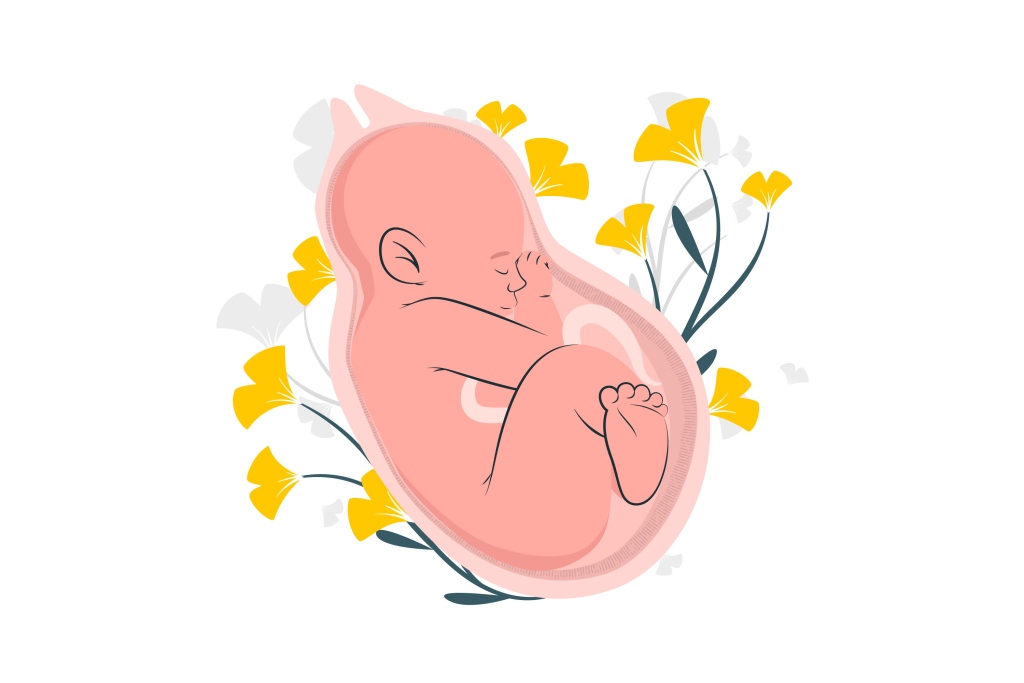Pregnancy with IUD is a complex medical condition. IUD is called intrauterine pregnancy which occurs when a fertilised egg is placed in the uterus and begins to develop there.
Pregnancy can only be maintained when it occurs inside the uterus. Ectopic pregnancy refers to a pregnancy that occurs elsewhere in the female reproductive system, such as the cervix, fallopian tubes, or ovary. They frequently result in miscarriage or abortion since they are frequently brief.
A foetal sac forms early in an intrauterine pregnancy, but the baby is too small to view within. Let us inform you of some fundamental facts concerning intrauterine pregnancy, including whether it is harmful or normal.
Contents
Is Intrauterine Pregnancy Normal?
Ultrasonography is the only method that can accurately diagnose this complex early intrauterine pregnancy. In order to validate your doctor’s first worries about an early intrauterine pregnancy, a follow-up screening is often necessary. Remember that specific maternal health conditions, the presence of abnormal chromosomes or genes, or other factors, could result in an intrauterine pregnancy failure.
Intrauterine Pregnancy Bad Or Normal
When the intrauterine pregnancy is visible in the correct location within the uterus, it is normal, and the heartbeat of the baby is also normal. Although the finding of an intrauterine pregnancy is normal in the early stages of pregnancy, if you’re farther along, it can be a sign that the pregnancy has sadly failed. In order to confirm the safety of the pregnancy, a second scan is typically provided in 8–15 days. Before 6.2 weeks, a heart rate of less than 80 beats per minute is linked to a poor prognosis and a higher chance of difficulties throughout the first pregnancy. Less than 102 bpm is linked to a higher chance of miscarriage between 6.2 and 8 weeks, while 120 bpm is linked to an incorrect diagnosis.
Symptoms of Early Intrauterine Pregnancy
The early Intrauterine pregnancy symptoms are Amenorrhea, nausea with or without vomiting, breast enlargement, increased frequency of urination, and exhaustion are among the early symptoms of pregnancy.
- Urinary cramps is a less frequent early symptom.
- Extreme bloating, constipation, and dizziness
- women who complain of stomach ache
- who have vaginal bleeding after a positive pregnancy test.
How is an IUP Confirmed
An ultrasound scan can be used to identify where an intrauterine pregnancy exists. A pregnancy inside the woman womb can be seen by:
An Evident Yolk Sac or Intrauterine Gestational Sac
Around 5.6 weeks into the viable intrauterine pregnancy, a transvaginal ultrasound can show the yolk sac. It can be seen up until the placenta develops, the conceiving embryo is sustained by the yolk sac. If an embryo can be seen, it is the exclusive characteristic that can insure a live intrauterine pregnancy.
A Prenatal Heart-Active Embryo
As early as six weeks during a pregnancy, foetal cardiac activity can be identified. Through the subsequent weeks, a heart rate increase of 103 to 125 beats per minute (BPM) is normal.
A rate below 80 bpm before 6.4 weeks indicates a poor prognosis and an elevated risk of miscarriage in the first trimester.
At 6.2–8 weeks, 120 bpm indicates a bad prognosis; at less than 100 bpm, the prognosis is particularly poor and the risk of miscarriage is elevated.
Ultrasound diagnosis of IUP
A single live intrauterine pregnancy is defined as a single gestational sac that is inside the uterus and has either a single yolk sac or a single foetal pole with an active foetal heart. This pregnancy, which is carrying a single foetus, is progressing regularly right now.
When a scan reveals a gestational sac in the uterus, it is too early to detect the embryo or the beating of the fetus’ heart. To determine whether the pregnancy is developing normally, more information (usually another ultrasound scan) is required.
Causes Of Intrauterine Pregnancy
Chromosomes or Genes That Are Abnormal
Problems with foetal development account for the majority of miscarriages. A completely random event, extra or missing chromosomes account for almost half of all miscarriages. This develops during your embryo’s division and growth and was not passed down from either parent. Having chromosomal abnormalities can lead to:
Infant Mortality in the womb
In this scenario, pregnancy loss symptoms wouldn’t manifest until the foetus stopped growing and died. A brightly coloured ovum. Never does the embryo begin to grow.
Mother Health
A miscarriage occasionally results from a previous maternal health problem. Few of the contributing components are as follows:
- Unmanageable Diabetes
Your health and the health of your unborn child are at danger if chronic disorders like diabetes are not managed.
- Imbalances in hormones
Hormonal imbalances can alter the uterine lining, making it more difficult for a fertilised egg to implant and grow.
- Significant infections
Infections in the mother from CMV, HIV, syphilis, listeriosis, toxoplasmosis, or malaria might have a negative impact on the unborn child.
- Age
A miscarriage is 25% more likely to occur in women over 36 than under 35. This increases to 45% at age 40, and doubles to 80% at age 45.
- Previous miscarriages
Mothers who have experienced two or more miscarriages are more likely to experience another, as expected. It’s important to remember, too, that previous miscarriages don’t always preclude the likelihood of a subsequent pregnancy ending successfully.
- Use Of Drugs, Alcohol, And Tobacco
The chance of miscarriage and congenital defects is considerably increased while smoking, drinking excessively, or using drugs while pregnant.
Early Intrauterine Pregnancy Failure Treatment
- If you want to maintain your unborn child secure and healthy, you should take into account the following lifestyle factors.
- Eat a balanced, healthy diet that is luxuriously in fruits and green vegetables.
- Give quit using illegal substances, alcohol, and tobacco.
- Keep your weight in check both before and after becoming pregnant.
- Treating antiphospholipid syndrome (APS) or a weakened cervix prior to conception will reduce your risk of an intrauterine pregnancy failure.
When should a doctor examine a pregnancy within the uterus?
After receiving positive pregnancy test results, consult a doctor if you have any health issues. Vasospasm and spotting are signs of early intrauterine pregnancy failure. In the event that you have these symptoms, please get medical help right away.





